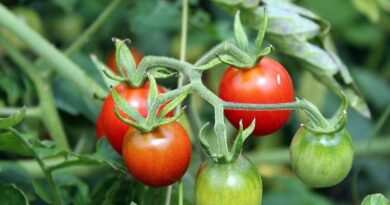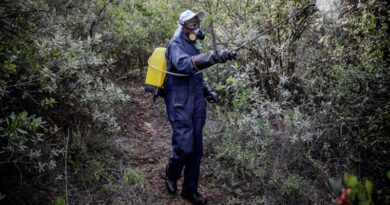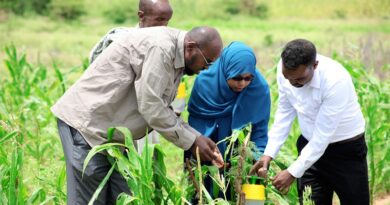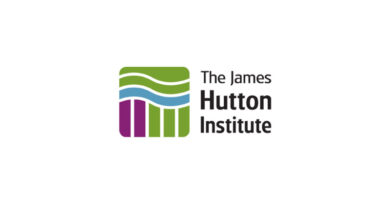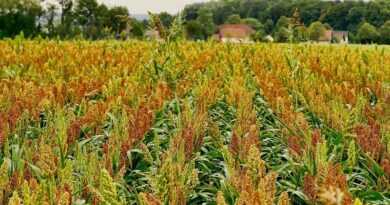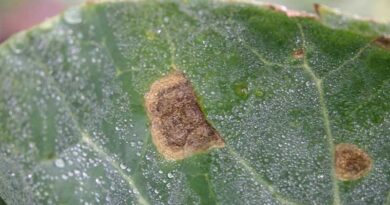Increases in Agriculture R&D Are Justified To Combat Risks To Global Wheat Supplies From Crop Pathogens
01 February 2023, USA: Crop diseases cause severe food and economic losses around the global, and these losses are consequential for farmers and consumers alike. Climate change is amplifying these issues by increasing plant stress and expanding the natural ranges of pathogens and attendant threats to harvests.
In a new study published in Frontiers in Plant Sciences, researchers from the University of Minnesota’s GEMS Informatics Center, Departments of Applied Economics and Plant Pathology, and 2Blades, a non-profit organization that contributes to food security and climate adaptation by protecting food crops from plant pests and disease, present new data that reveal just how vulnerable the world’s wheat crop is to climate-fueled pathogen losses.
The GEMS team used their data and computational resources with a new multi-peril model to examine the economic impacts of crop disease not only caused by individual pathogens but also the multiple pathogens that farmers contend with in their fields.
The current scale of losses from the top five wheat diseases is estimated between $4.2B to $10.8B every year. A high-loss scenario translates to around an 8.5% shortfall in wheat production worldwide on average—representing calories sufficient to feed up to 173 million people each year.
Crop breeding exploiting modern genetic tools can produce more resilient varieties, but data from the USDA Economic Research Service show that public investment in agricultural research and development is at its lowest level since 1970.
The team calculated the economically justifiable investment in research to manage and mitigate these losses. The investment in public wheat research worldwide for “pest & disease” related research has stayed flat at $185 million annually over several decades. Further funding of $350M to $974M would provide a 10% per year return on investment for R&D to control these diseases. The bottom line is that an increase in public R&D funding of 2- to 5-fold is warranted.
“Our analysis helps demonstrate the economic value of addressing crop production threats at the R&D stage, “said Diana Horvath, 2Blades’ president. “For too long the US and other countries have been underinvesting in R&D, and the impacts are clear in the crop losses caused by disease, as demonstrated in our study, and by spikes in food prices and global hunger. These threats are increasing with climate change and ultimately will be far more costly in terms of human suffering and food aid.”
The National Association of Wheat Growers (NAWG) says wheat is disproportionately dependent on public investments for continued crop improvement.
Wheat Diseases Impact Food Security around the World
Wheat is one of the world’s most important staple food crops, occupying the largest geographical footprint of all the world’s crops and accounting for about one-fifth of the total calories and protein consumed by the planet’s 7.9 billion people every year.
But wheat is vulnerable to infection from a host of diseases, weeds, insects and other pests that reduce crop yields and expose supply chains to seasonal and regional risks.
“ Farmers must contend with multiple diseases simultaneously,” said GEMS co-director Phil Pardey. “We find the multi-peril risk facing wheat farmers is pervasive and problematic, with around 75% of the global wheat crop in areas where the climate can sustain at least four of these fungal diseases. Farmers throughout Latin America and sub-Saharan Africa are especially vulnerable.”
The study results also show that in Asia, where nearly 40% of the world’s wheat is grown, there is a greater than 90% suitability for three of the five pathogens.
Not only does Fusarium Head Blight present the most severe risk of yield loss globally, it is the cause of a significant additional burden – producing dangerous mycotoxins that poison people and livestock.
The American Society of Agronomy study says grain yields of Great Plains hard winter wheats may have peaked in the early to mid-1990s, and further improvement in the genetic potential for grain yield awaits some new technological or biological advance.
There are various innovation options to address these recurrent pest problems, the most environmentally benign being to avoid disease at the outset through crop genetic resistance. Ongoing breakthroughs in the development and deployment of durable resistance can enable new, long-lasting solutions.
(For Latest Agriculture News & Updates, follow Krishak Jagat on Google News)


